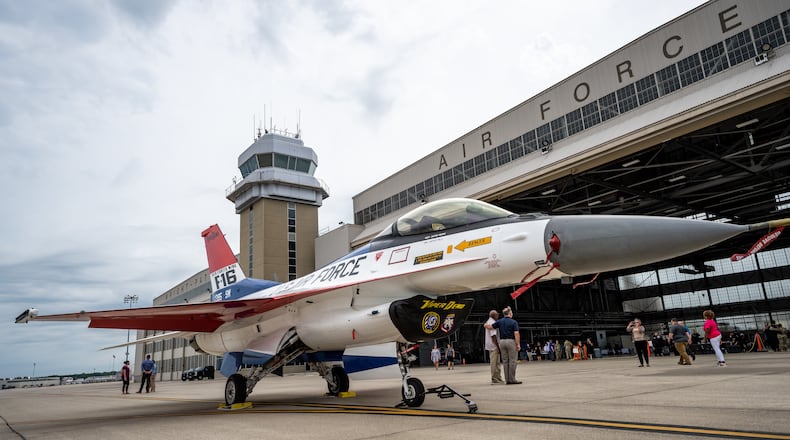“It’s going to be fun,” Turner said in an interview.
While the base and its predecessor installations have grown steadily in the past century-plus, that growth seems to have been supercharged in the past 22 years.
In 2002, Wright-Patterson had about 19,000 people working “inside the fence,” as base advocates describe the installation’s working population.
Credit: 88th Air Base Wing
Credit: 88th Air Base Wing
Turner joined the House Armed Services Committee after he was elected to Congress that year, where he soon found that while the committee’s 64 members were aware of the crucial missions on the base, none of them had ever visited.
“My first task was to bring them to Wright-Patt, to educate them,” he said.
Turner regularly brings members to the base and he has had the base host annual retreats for the House Permanent Select Committee on Intelligence, most recently in May. (Turner joined the Intelligence Committee in 2015 and was appointed its chairman early last year).
By March 2023, the Wright-Patt workforce number was acknowledged to have nearly doubled to 35,000.
In May this year, Col. Travis Pond, deputy commander of the 88th Air Base Wing at Wright-Patterson, said the latest numbers showed 38,000 people lived and worked there.
Base advocates regularly hail Wright-Patt as the beating heart of Air Force research, acquisition and sustainment work, particularly since 2005, when the Base Realignment and Closure Process — usually called “BRAC” — sent base growth into overdrive.
There can be winners and losers in any BRAC process. In 2005, Wright-Patterson emerged as a definitive winner, receiving jobs moved from other installations.
That year, the U.S. Air Force School of Aerospace Medicine, the Air Force Institute for Operational Health, the Performance Enhancement Directorate merged to form the 711th Human Performance Wing, a new Air Force wing moved to the Air Force Research Labortory, headquartered at Wright-Patterson.
According to a 2007 release from the 88th Air Base Wing, the base expected to gain about 1,120 military and civilian jobs from the 2005 BRAC, with some 3,800 people expected to move to communities around the base.
That year’s BRAC aftermath involved $335 million in construction and renovation projects, the 88th Air Base Wing Civil Engineer Directorate said at the time.
Wright-Patt has long been seen as the largest concentration of employment in a single location anywhere in Ohio. In 2021, the coalition and JobsOhio found that federal installations supported some 103,200 jobs in the Dayton region, generating $8.3 billion in earnings and creating $11.6 billion in a region-wide economic impact
Shepherding and protecting Wright-Patt has been a “team sport,” Turner said.
“Everyone has worked so hard on the growth at Wright-Patt,” he said. “We’ve never paused and taken a look at what have we achieved.”
Turner doesn’t know what the ceiling is on Wright-Patterson’s employee numbers. But he notes the presence of the National Space Intelligence Center there, with a growing cadre of Space Force guardians. The base is said to be home to anywhere from a third to half of the Space Force’s entire ISR (Intelligence, Surveillance and Reconnaissance) enterprise.
“We’re continuing to grow our joint missions on the base,” the congressman said. “It’s possible for us to look beyond the Air Force.”
About the Author



